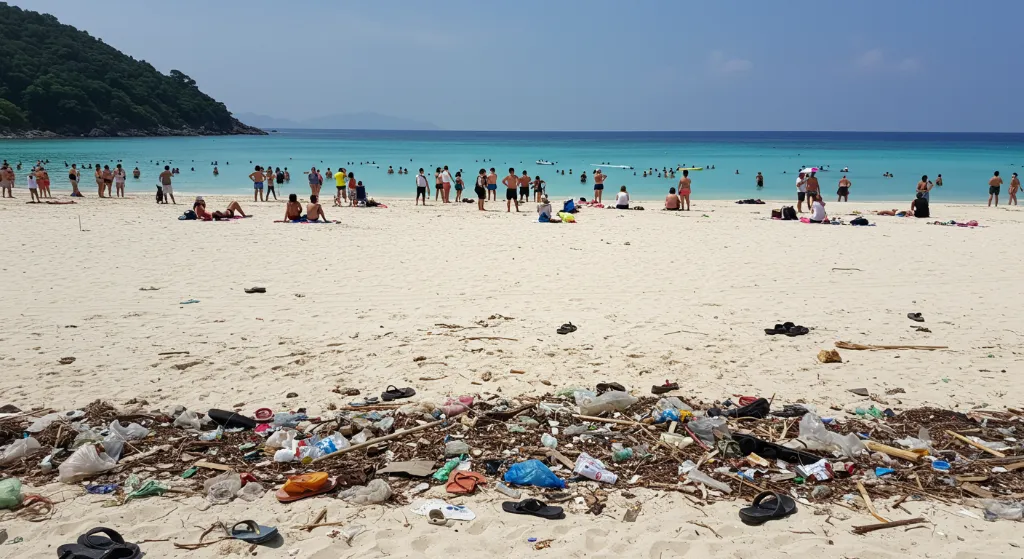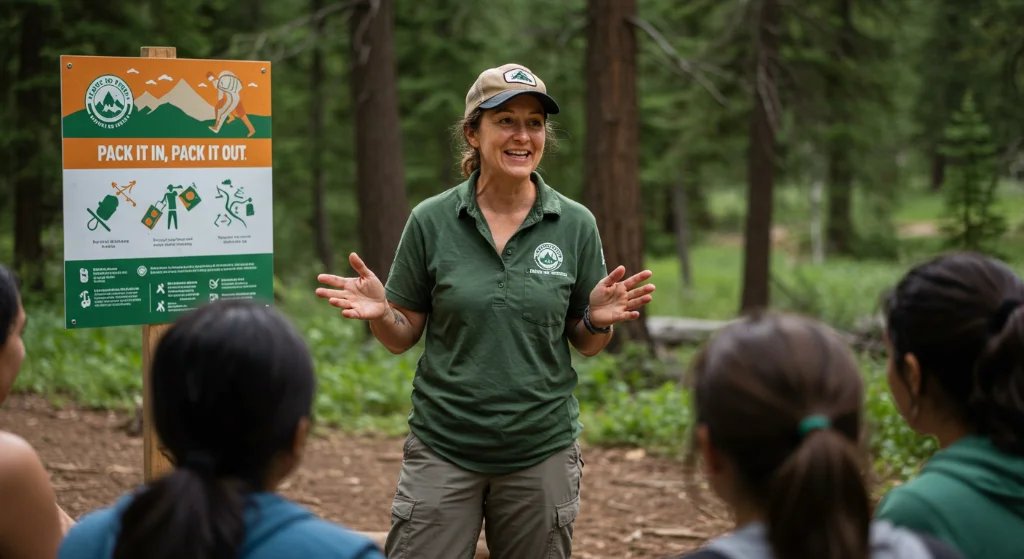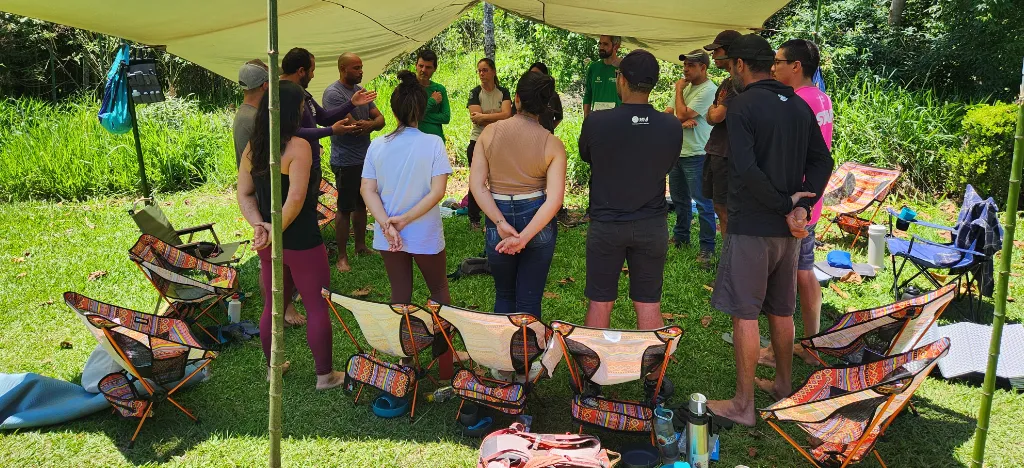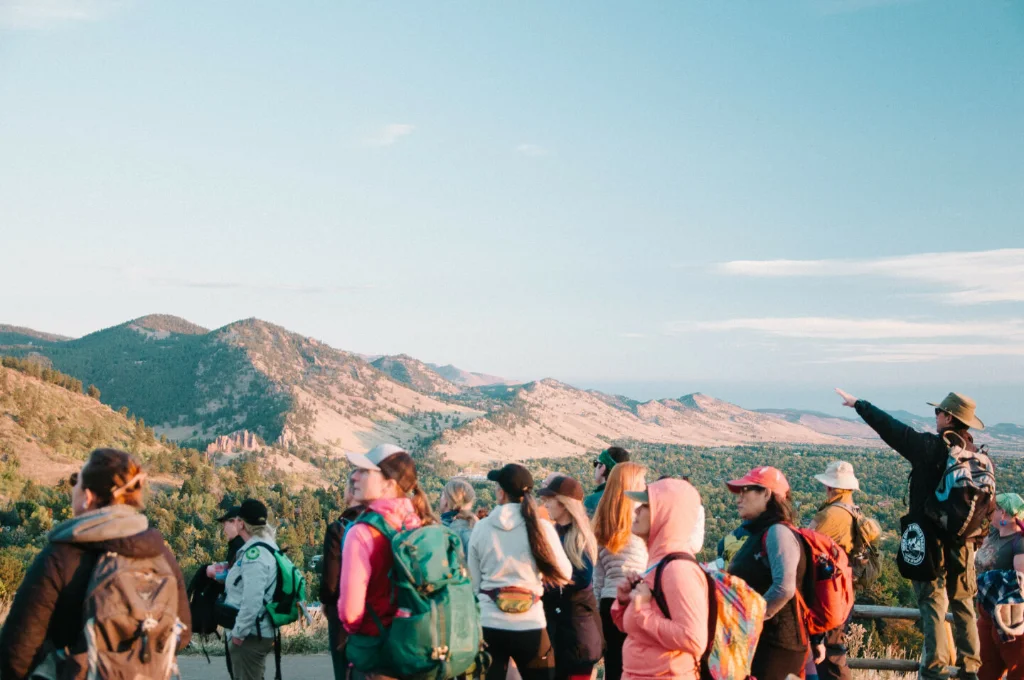Excessive tourism — or overtourism — refers to the overcrowding of popular destinations, harming the local environment, economies, and communities. This issue is becoming increasingly urgent for many destinations worldwide. However, there is a promising path forward: regenerative tourism.
Regenerative tourism goes beyond sustainability by actively seeking improvements in a destination’s social, cultural, and environmental systems. By focusing on environmental management and sustainable practices, it offers a solution that empowers both visitors and communities to protect the natural and cultural heritage of the most sought-after tourist spots.

Illustrative image generated by artificial intelligence
Preserving Ecosystems and Supporting Communities
Natural landscapes — from pristine forests to crystal-clear rivers — are not just beautiful backdrops for leisure. They provide vital ecosystem services, such as carbon capture, water filtration, and biodiversity preservation. These services play a crucial role in combating climate change and strengthening the resilience of local communities.
Regenerative tourism contributes to the health of these ecosystems by educating visitors on how to minimize environmental impact and follow principles such as those of Leave No Trace. The result? Long-term sustainability for the very resources that attract visitors.
Healthy ecosystems mean vibrant tourism economies, stable local jobs, and the assurance that iconic destinations will remain accessible for future generations.
Education as a Path to Change
One of the most effective ways to tackle overtourism is through education. Campaigns such as North Carolina’s “Outdoor NC” and Colorado’s “Care for Colorado,” developed with the help of Leave No Trace, integrate sustainability messages into tourism marketing. These efforts teach visitors to enjoy outdoor spaces responsibly, promoting a culture of care and respect for the environment.

Illustrative image generated by artificial intelligence
Collaborative initiatives, such as North Carolina’s guide program, bring together outdoor industry professionals to amplify these messages. By equipping guides and tour operators with tools to educate their clients, these programs multiply the impact and encourage responsible recreation.
In Brazil, Gear Tips, through the Empowerment Program, is doing something similar: by offering subsidized courses such as the Leave No Trace – Level 1 Instructor, it trains guides, instructors, and outdoor industry professionals to adopt and disseminate minimal impact and sustainability practices.

Photo: Leave No Trace Level 1 Instructor Course – Empowerment Program Gear Tips
With this training, professionals not only educate clients about the importance of environmental preservation but also become multiplying agents, promoting a culture of respect for the environment and cultural heritage on trails, national parks, and other tourist destinations across Brazil.
Collaboration Yields Concrete Results
Real-life examples demonstrate the power of collaboration in regenerative tourism:
- Sonoma County Leave No Trace Coalition: Developed in partnership with Leave No Trace, this coalition brought stakeholders together to clean coastlines and strengthen local economies. Recently, it expanded and became part of the “Cleaner California Coast” initiative.
- Denali National Park Zero Landfill Initiative: Guided by Leave No Trace principles, this partnership with local businesses and waste management companies reduced waste and improved visitor behavior regarding proper disposal.
- Moab Trail Mix (Grand County, UT): With the support of Leave No Trace, this initiative brings stakeholders together to manage trail systems sustainably and minimize environmental impacts.
- Horseshoe Bend Visitor Guide: This location experienced a significant increase in visitors over a short period, partly due to social media exposure. Leave No Trace, in partnership with the National Park Service, created a visitor guide video as part of a broader program called “Hot Spot,” which equips land managers and stakeholders with best practices for visitor engagement and education.
Empowering Local Communities
Regenerative tourism is not just about protecting nature; it also seeks to empower the communities that depend on tourism. Responsible practices help reduce pressure on local resources, fostering positive relationships between residents and visitors. When tourism supports rather than overwhelms local infrastructure, communities and ecosystems thrive.
By encouraging visitors to follow Leave No Trace principles, we are creating a shared commitment to preserving natural and cultural resources. Small actions, such as packing out all trash or staying on designated trails, help keep landscapes clean and protect fragile ecosystems. These practices also ensure a positive visitor experience, keeping destinations attractive and accessible to all.
Additionally, responsible tourism reduces pressure on local infrastructure, fostering long-term relationships between visitors and communities. This connection builds loyalty: tourists are more likely to return to destinations they perceive as well-maintained. For local businesses, this means repeat customers who value sustainable practices. For communities, it translates into a resilient economy built on practices that respect both people and the environment.

Photo: sourced from the Leave No Trace website – https://lnt.org
A Vision for the Future
Regenerative tourism offers a path toward a more sustainable and rewarding future for destinations worldwide. By preserving natural ecosystems, enhancing visitor experiences, and empowering local communities, we can transform overtourism into an opportunity for growth and resilience.
This approach is a win-win strategy for residents, visitors, and businesses alike. By prioritizing environmental management and sustainable practices, destinations can remain vibrant, welcoming, and prosperous for generations to come.
Source: Leave No Trace – Tackling Overtourism with Regenerative Tourism.
This post is also available in: Português (Portuguese (Brazil)) Español (Spanish)
